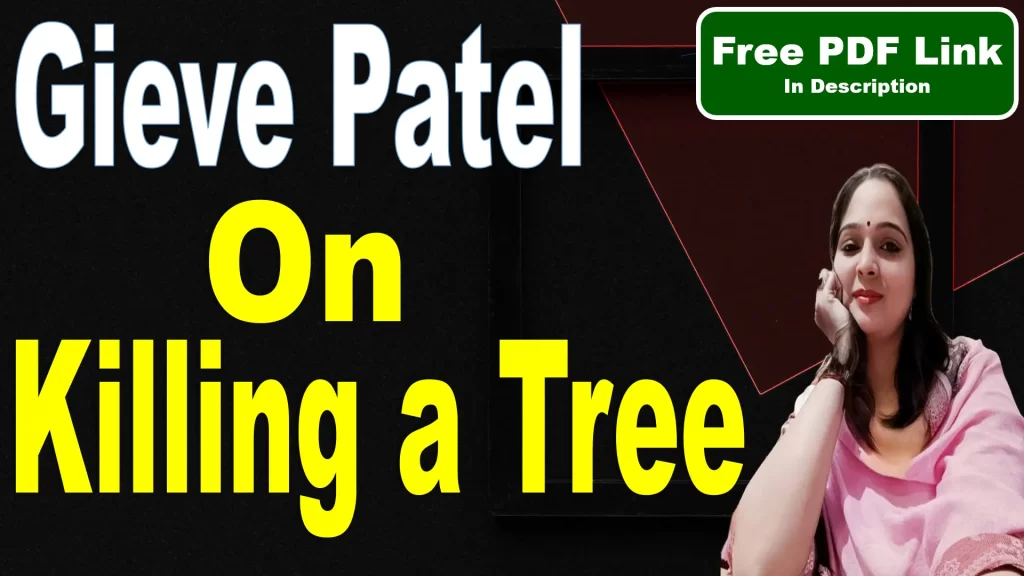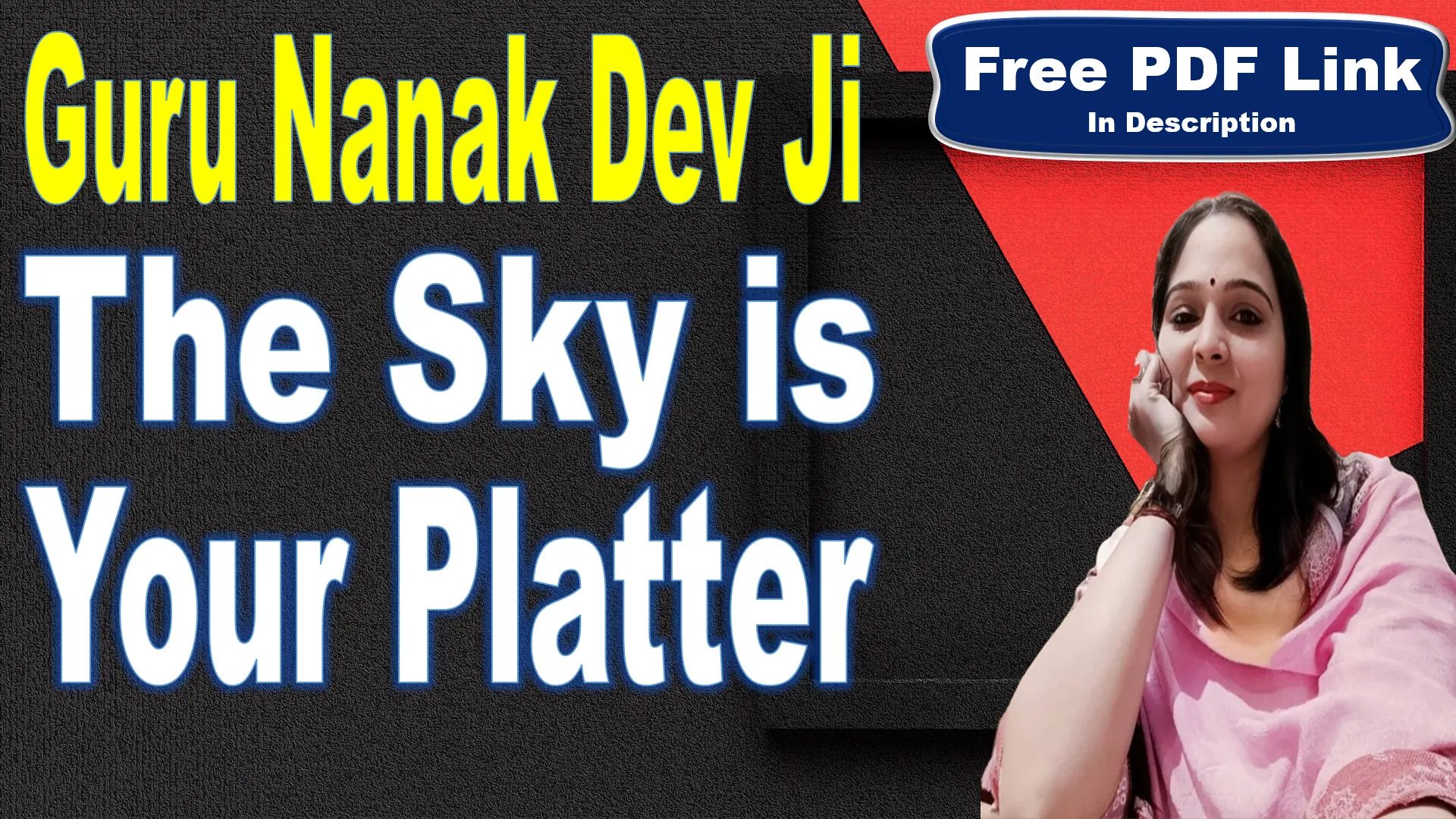
Essay Type Questions
Critical Appreciation of “On Killing a Tree” Poem by Gieve Patel.
Introduction
“On Killing a Tree” by Gieve Patel is a thought-provoking poem from his collection Poems (1966), edited by Nissim Ezekiel. The poem vividly describes the process of killing a tree, emphasizing its resilience and critiquing human violence towards nature. Written in free verse, it is a part of the “Green Movement” in Indian literature and reflects Patel’s deep concern for the environment.
Central Idea
The poem revolves around the difficulty of destroying a tree, which symbolizes the strength of nature and life. It critiques humanity’s insensitivity towards nature and highlights the resilience of life. The tree’s survival despite superficial harm underscores its tenacity, while the description of uprooting reflects the brutal and irreversible nature of human interference.
Structure & Rhyme Scheme
The poem is written in free verse, without a specific rhyme scheme or metrical pattern. This unstructured form mirrors the natural flow of the tree’s life and the deliberate yet chaotic process of its destruction. The lines are divided into four logical sections that represent the growth, superficial damage, uprooting, and final death of the tree.
Theme
Resilience of Nature: The tree heals from injuries and regenerates, showing life’s persistence.
Human Insensitivity: The deliberate, violent act of uprooting reflects humanity’s destructive tendencies.
Interconnectedness of Life: The tree relies on sunlight, water, and earth, symbolizing harmony with nature.
Irreversible Destruction: Uprooting represents severing life’s foundation, leading to permanent damage.
Style
The language is simple yet evocative, using vivid imagery to depict the tree as a living being. The tone is clinical and detached in describing the act of killing but subtly shifts to reflective, critiquing human actions. The poet’s use of free verse allows for natural expression, aligning with the organic theme of the poem.
Poetic Devices
Personification: The tree is personified as a living being, e.g., “bleeding bark” and “healing.”
Imagery: Strong visuals like “white and wet” roots and “browning, hardening, twisting” depict life and decay.
Symbolism: The tree symbolizes life and resilience; the roots represent its foundation and strength.
Enjambment: Continuous lines without punctuation mimic the natural cycle of life and destruction.
Metaphor: The “earth-cave” symbolizes the nurturing environment of the soil.
Critical Commentary
Critics have praised Patel’s ability to blend ecological awareness with poetic expression. Nissim Ezekiel described Patel as an important voice in Indian English poetry, capturing the human-nature relationship vividly. Some critics interpret the tree as a metaphor for entrenched ideologies or relationships, emphasizing the difficulty of severing deep-rooted connections.
Message
The poem urges readers to respect nature and reflect on the consequences of their actions. By showcasing the tree’s strength and the brutality of its destruction, Patel warns against human arrogance and insensitivity. The poem calls for ecological responsibility and highlights the interconnectedness of life.
Conclusion
“On Killing a Tree” is a powerful and timeless poem that combines vivid imagery, free verse, and profound symbolism to critique humanity’s destructive relationship with nature. It not only celebrates the resilience of life but also serves as a warning about the irreversible damage caused by thoughtless actions. Gieve Patel’s ability to intertwine ecological concerns with poetic beauty makes this poem a significant contribution to Indian English literature.
Long note on the themes of the poem.
Resilience of Nature
The poem highlights how nature is incredibly strong and persistent. The tree symbolizes life’s resilience, as it heals from injuries and continues to grow even after being hacked or chopped. Its roots are deeply embedded in the earth, making it difficult to destroy. This theme emphasizes that superficial harm cannot permanently damage something that is deeply rooted and connected to its environment.
Human Insensitivity Towards Nature
The poem critiques humanity’s destructive behavior towards nature. The detailed process of killing a tree reflects the calculated and thoughtless harm humans inflict on the environment. By describing the violent act of uprooting and exposing the roots, the poet highlights the brutality involved in destroying something so vital and life-giving.
Interconnectedness of Life
The tree represents the interconnectedness of life with nature. It depends on sunlight, water, air, and soil to grow, symbolizing how all living beings are connected to their surroundings. This theme suggests that disrupting this balance, as humans do by destroying trees, can have far-reaching consequences.
Persistence of Life
The poet shows how life, symbolized by the tree, strives to regenerate and survive. Even after being damaged, the tree continues to grow through its shoots and twigs. This resilience mirrors the persistent nature of life, which cannot be easily destroyed unless its very foundation (the roots) is severed.
Irreversible Destruction
The poem portrays the finality of destruction once the roots are removed. The act of uprooting the tree represents the severing of life’s foundation, making its recovery impossible. This theme serves as a warning about the irreversible consequences of humanity’s actions, reminding us to act responsibly towards nature.





